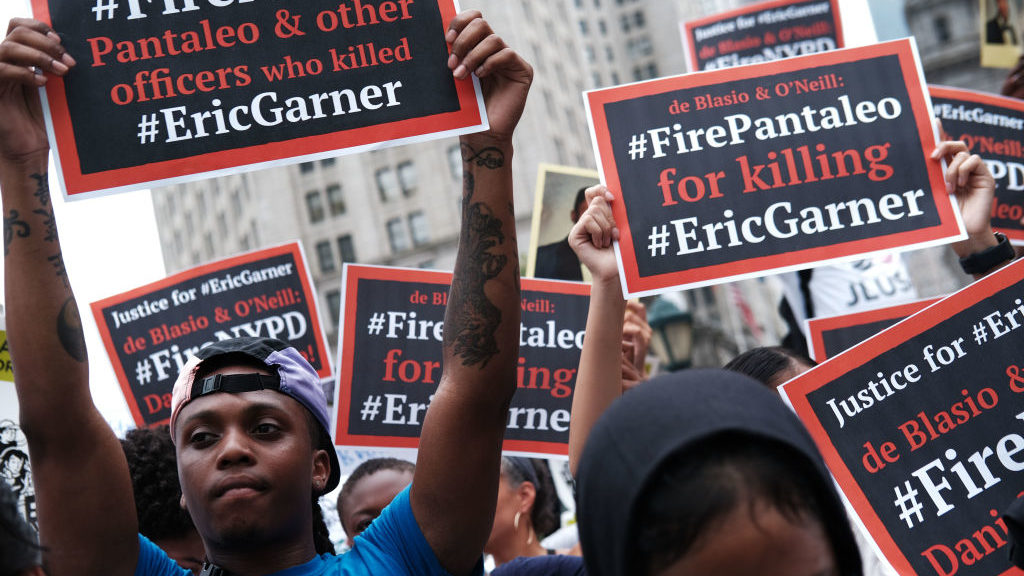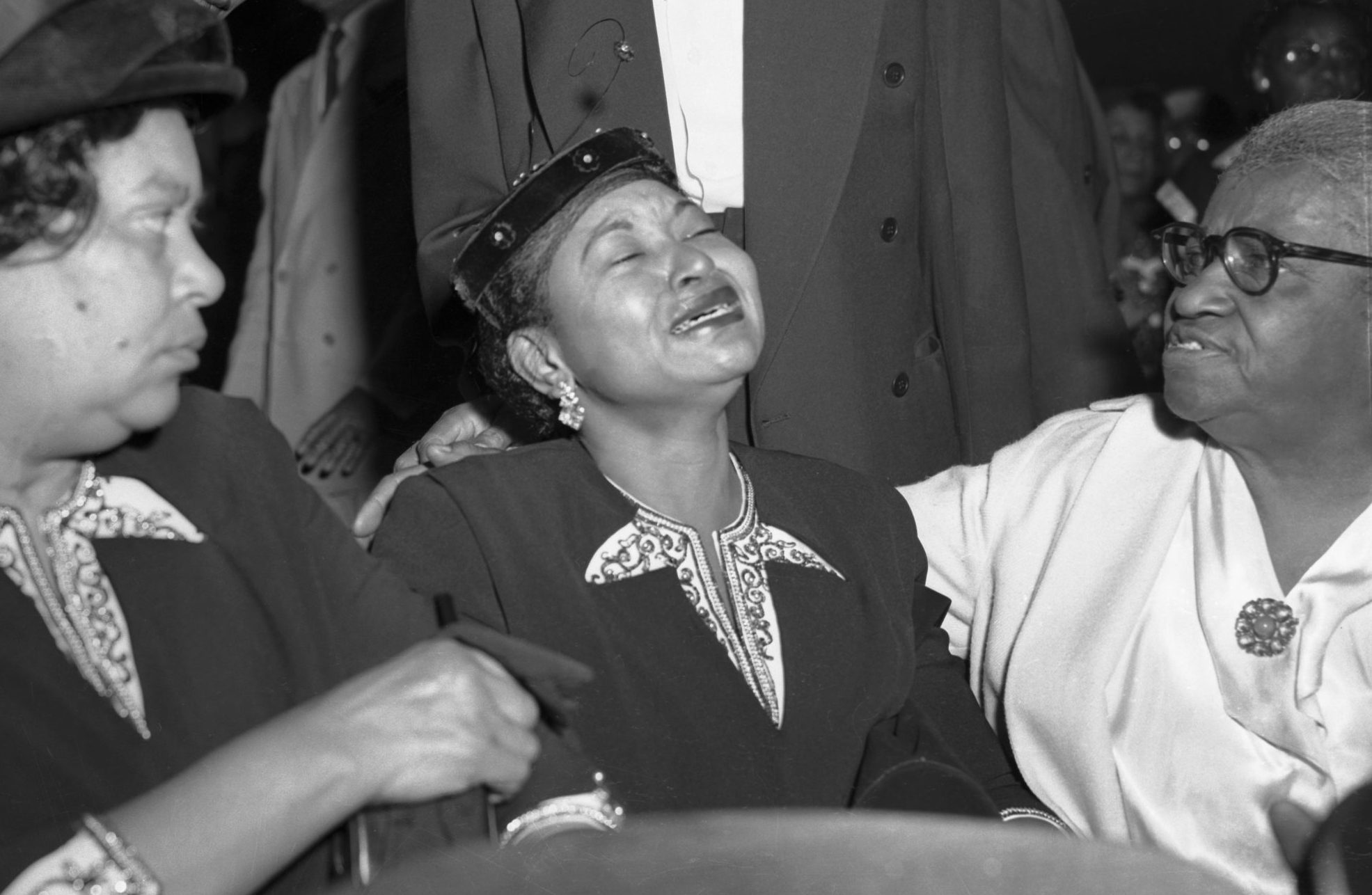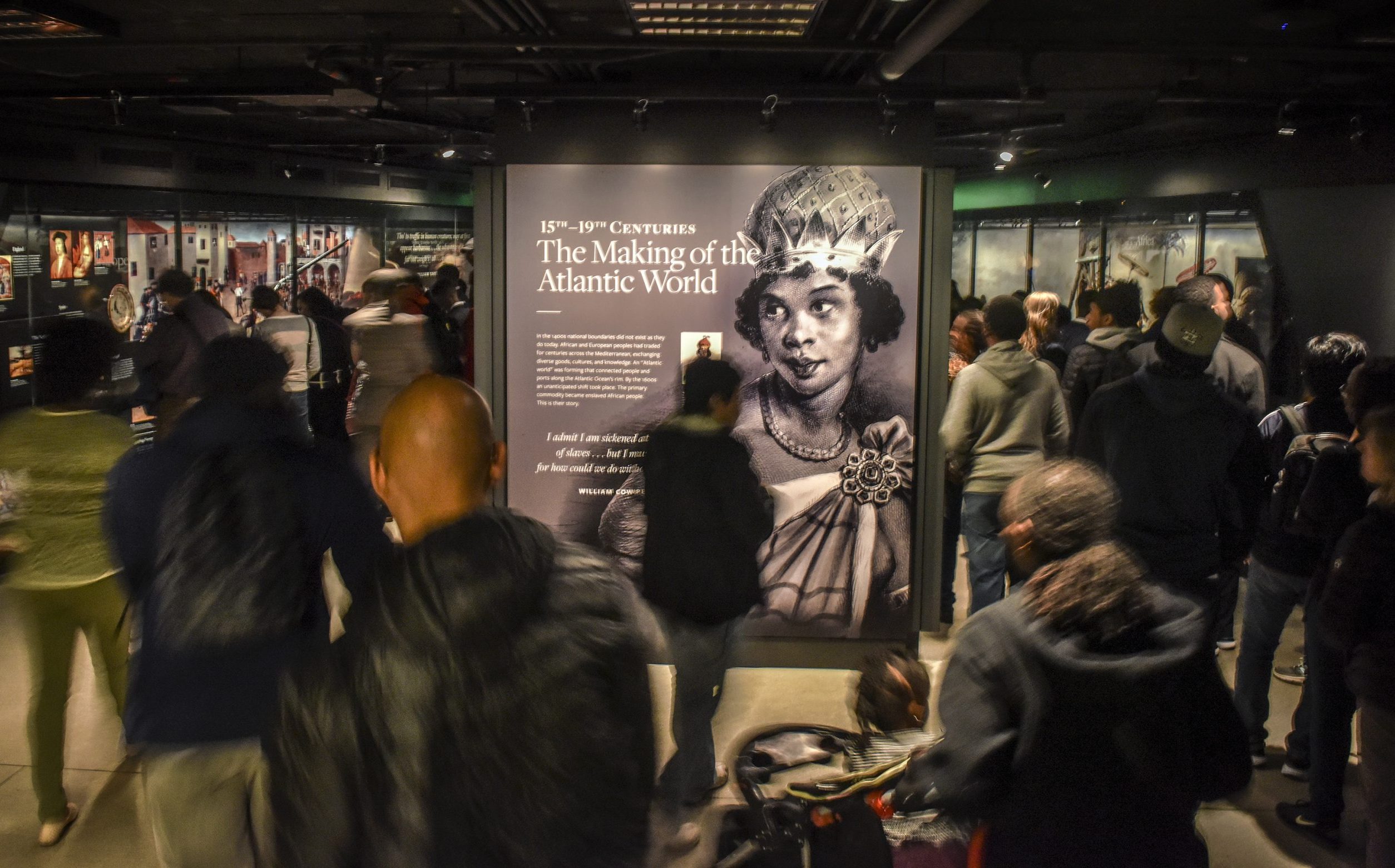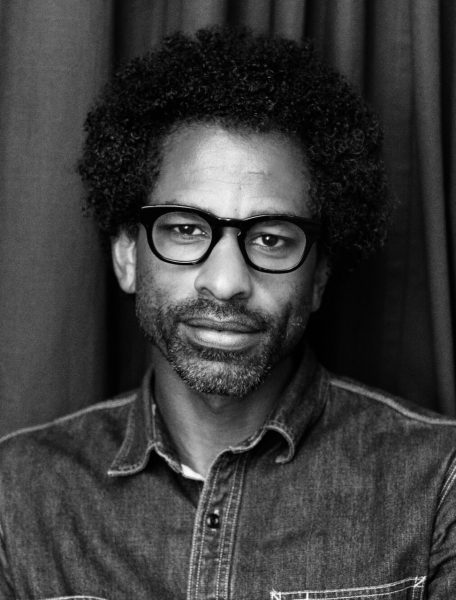Ahmaud Arbery video reminds us Black people still get lynched, even today
OPINION: Author Touré on why he couldn't look away from the footage of another senseless murder of Black life

I watched the Ahmaud Arbery video six times in a row. I needed the trauma to really sink in. I wanted to be hurt by it. I wanted to feel his pain. I wanted to see it so much that I could put myself in his shoes and imagine the fear he felt as he tried to run around these men chasing him.
I needed to be able to understand the scene set by Greg McMichael and Travis McMichael, men who appear to have set him up and who now have been arrested and charged with murder.

Left to right: Gregory McMichael, 64, and Travis McMichael, 34, were charged with murder and aggravated assault. (Photo: Glynn County Jail)
READ MORE: 2 men arrested, charged with murder in the shooting of Ahmaud Arbery
I needed to watch because I have to know what’s going on in the world, I have to know the reality of the hell that Black people are catching every day. I want to be awake and videos like this are like smelling salts for the mind. I did not watch and share this video with any thought of the impact it would have on white people. I do not move through the world wearing white gaze glasses and I do not look at this video as a way to prove to white people that racism is real.
I care about me knowing in my blood that it still exists to such an extent that Black people still get lynched, even today. I need it to remind myself to be vigilant as a person and as a parent because that could have been me or you jogging down that block, right into their trap. I have to be reminded of the pain of Blackness because I never want to be so comfortable that I forget.
Like many people, I have watched about 100 of these crude videos, these snuff films that show Black people being killed in brutal ways, killed because of a lack of respect for Black bodies.
READ MORE: Georgia promises thorough probe in killing of Ahmaud Arbery
There’s a slew of clips that I can see in my mind’s eye right now. You can probably see them too: Eric Garner being tackled and choked down to the ground as if the cops were a pack of cheetahs trying to take down an elephant.
Little Tamir Rice being interrupted by a squad racing in and someone gunning him down near a veranda. I can see Walter Scott running away, I can see Laquan Macdonald staggering away, I can see Philando Castile bleeding as his family looks on in horror. I can see Sandra Bland and John Crawford and Alton Sterling and so many others. I carry these clips in my mind like a heavy weight.

People participate in a protest to mark the five year anniversary of the death of Eric Garner during a confrontation with a police officer in the borough of Staten Island on July 17, 2019 in New York City. (Photo by Spencer Platt/Getty Images)
It’s a burden to be able to see these clips at any time. If I see one video it makes me think of the others. If I see one of their names on a t-shirt or someone who kind of looks like them, they come rushing back in a nightmare montage. I need a break. I need to not see any more. I’m traumatized.
I know people in Black Lives Matter who have dedicated their lives to the movement who say they aren’t watching them anymore. They say it hurts the soul to watch any more. I know it does. We as a Black community are carrying the psychic weight of those videos in our collective memory.
You know the photo of the older male slave with his naked back to the camera showing the keloided lash marks crisscrossing his back? That’s how the videos sit in our minds, like a horrifying set of scars in our mind. I don’t need to watch any new videos. I know the story they tell. So why do I keep watching?
When Mamie Till demanded they leave her son Emmett Till’s coffin open so that the world could see what they had done to her boy it was a powerful act of defiance. It was about refusing to turn away from the ugliness of Black life. It was about finding strength in the valleys of Black history. It was about using the naked truth to create power.
Mamie Till’s courageous decision changed American history. She set the stage for a photographer to take a picture of Till’s deformed body and that photograph galvanized the Civil Rights Movement. When I think of looking away, I think of Mamie and how she changed America by her refusal to look away and her demand that everyone else look, too.

Mrs. Mamie Bradley, mother of Emmett Till, 14, who was found slain in Mississippi where he was on vacation, is near hysteria as she attends funeral services here. Till was found with bullet through head after two white men had kidnapped him. (Photo: Getty Images)
If we don’t look then the crime happens in the shadows and it can be swept away — the McMichael monsters were not arrested because the authorities saw the video. They were arrested because America saw the video and we were outraged. If we don’t look, then there’s no chance these men are arrested. Black history is x-rated; from slavery to these videos there’s always something in Black history that’s more frightening than a horror film. Our story is littered with pain and oppression and atrocities.
When I took my kids to the National Museum of African-American History and Culture, as we walked through the floors about slavery they cried. I said good. You should cry. This is hard stuff. Don’t look away. This is who we are. This is who we come from. When I learned that history as a kid it made me angry and it made me take my life seriously, made me feel like my life has to mean something, it has to have some purpose because of the sacrifices and the traumas that those who came before me soldiered through.

The entrance to the David M. Rubinstein historical galleries are still a choke point at the National Museum of African American History and Culture at its’ 6 month anniversary on March, 20, 2017 in Washington, DC.
(Photo by Bill O’Leary/The Washington Post via Getty Images)
I stand on the shoulders of people who survived trauma for me to be where I am. So when something new comes to remind me of the pain of being Black, I have to watch, because that pain is at the source of my sense of purpose. That pain is the fuel that makes me grateful for the freedom and the opportunity that I have.
That’s the sacrament that I have to take in the Church of Blackness so I can remember to properly worship the ancestors and the dead, people like Ahmaud Arbery, who I hope is at peace and watching down as we fight to get justice for him.
 Touré is the host of the podcasts Toure Show and democracyish and the author of six books.
Touré is the host of the podcasts Toure Show and democracyish and the author of six books.
